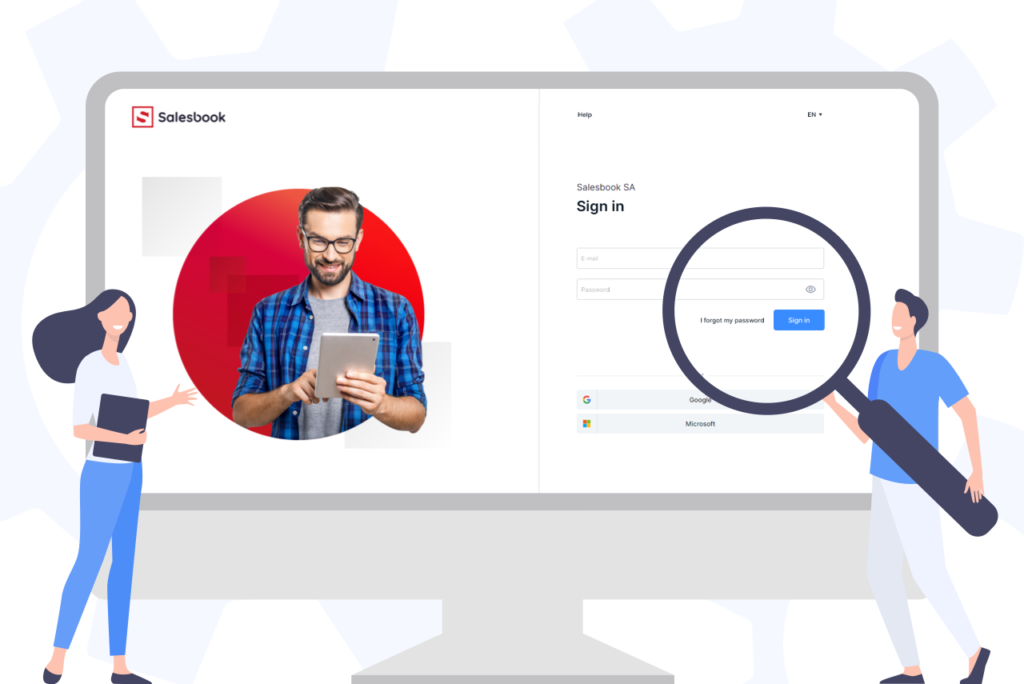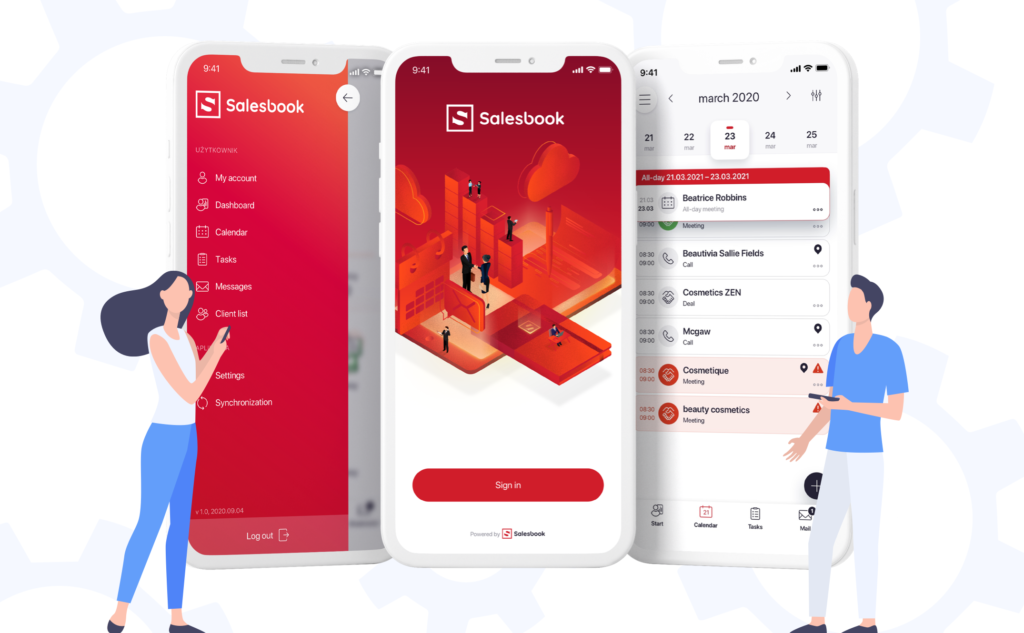Distribution and sales in insurance. Those who use new tools will survive

The world is rushing around like crazy, but one thing remains the same: the way of direct selling in the insurance industry. Here, for hundreds of years, we’ve been cultivating the same model, a solitary advisor supported by a brochure, pen and good looks. Can something change? Can a salesman get the tools to take him to the 21st century, where new technologies and data-based analytics reign supreme? It turns out so.
Still in the same place
Sometimes it seems that everything has been said about sales tools. The salesman takes a briefcase of materials, meets with the customer, and then makes a note in the CRM – this is checked by his superior and on its basis, he makes specific decisions.
But is that enough? First, the seller is required to increase sales year on year, but the “sales” tools are still the same. These are usually hands, mouth and a set of printed materials (folders, product leaflets, etc.). This is very limiting – salespeople who want to meet their requirements must work 10 hours a day or more. They do not have something with them that would give them a real advantage in contacting an increasingly demanding and difficult customer.
Secondly, complementing CRM post factum gives very limited value, because the data collected in this way is declarative – its quality depends entirely on the seller. A clever salesman will enter exactly what the organization expects in CRM. The company does not gain information that can be used to make management decisions in this way. What is more, experience shows that the insurance industry is particularly vulnerable to various types of abuse in reporting on real meetings with customers.
Customer requirements are growing
A study carried out by Salesforce entitled “State of the Connected Customer 2018” shows that as much as 80% of customers confirm the role of user experience during the sales process, putting it on a par with the product or service itself. 67% of customers are willing to pay more for their merchandise if the service is at the highest level, and 67% of North American respondents believe that their expectations of the seller are higher than ever.
The bottom line is that by providing the customer with a better experience, we have a better chance of closing the deal, faster and at a higher price. That’s why we need to be perfectly prepared from the very first meeting, having all the sales tools – presentations, multimedia, demos, comparison tools, configurators, etc. – with us. What is more, our process of telling the customer about the product must be proven, structured and sensible, the materials must be visually attractive and the offers understandable to everyone.
No data
But how to plan such a process, where and how to collect real data on the direct meeting? While in e-commerce the situation is obvious today (all decisions are made based on online analysis), in direct sales it looks much worse. Usually a sales director, who is using only CRM, does not know exactly how long the meeting lasted, what materials were presented, what data the salesman managed to collect, what interested the customer and what product configuration was presented to him.
There is no tool that will allow him to check whether the customer received the offer by e-mail, whether he opened it, how much time he spent on it and what elements of the offer interested him. Of course, you can force the seller to take notes containing such information, but the seller main task is to sell. This means that he must focus on the conversation and argumentation, not on the tasks like taking notes. Imagine how much more time is needed for CRM service, if somebody tells the seller to take detailed notes! Already today, we can read in many insurance industry reports that salespeople spend only 36% of their time on the actual sale. They spend the remaining time on reporting and logistics. This is extremely inefficient. So, what should a sales manager do?
Sales Acceleration tools
And yet, there are organizations in Poland and worldwide that have decided to change this situation and have reached for a new product category – Sales Acceleration. They usually consist of two main components.
- The first one is for the salesman – he gets a tablet with the application installed. After launching it, he gets access to all marketing and sales tools in electronic form: presentations, photos, folders, technical brochures, case studies etc. Because he has them in one place, he doesn’t have to look for them – he can choose the materials that will help him in each conversation. The salesman talks to the customer, presents the product on the tablet, and when the meeting is over, the tool automatically prepares an offer and sends it to all interested parties.
Imagine, for example, that we are selling an insurance product to ensure a prosperous future for our children. It is not an easy product, it requires knowledge of some financial terms and is, however, connected with quite personal sphere of the customer’s life. Instead of a tedious survey, we can pull out a tablet with a graphical calculator, where we will collect information from the customer in a few minutes. We will use the symbolism and iconography that speaks better to the imagination than the questions asked. - The second component is designed for managers – the application automatically monitors all actions taken – when and where the meeting started, how long it took, what materials were used during the meeting, what offer was made. In this way, for the first time in history, sales managers are given the opportunity to conduct direct sales analytics. This allows agents to monitor their working hours and view the materials they use on an ongoing basis and shows the number of offers sent and appointments made.
Not only managers but also other salespeople have access to this data. In this way, they can improve their qualifications – a preview of how the best people work is a very effective form of learning.
Confirmation in figures
The CSO Insights report “The Sales Enablement Report” indicates that retailers who are supported by Sales Acceleration applications sell more often than their colleagues who use more traditional tools. In 2018, the percentage of representatives who have met the budget assumptions increased by as much as 10.6 percentage points (to 43%), which is an improvement of as much as 22.7%.
It also turns out to be untrue to say that customers do not like or do not want to meet with traders – they do, only under certain conditions. The most important is that such a meeting should have value, and thus that the way the offer is presented should solve specific problems of a potential buyer.
In a CSO Insights report titled “The Growing Buyer-Seller Gap” provides interesting data on this topic. Well, as many as 65.2% of the respondents who met with representatives using Sales Acceleration tools considered such a meeting valuable; 61.8% said that the meeting met their expectations, and 32.2% said that the offer and the manner of presentation exceeded their expectations. Only 2.6% of respondents wanted to make an online purchase, without the support of the seller.
Artificial intelligence in insurance sales
Finally, Sales Acceleration tools open the way to go one step further in data analytics and focus on the very popular Machine Learning trend. This allows applications of this type to suggest actions to be taken in order to increase the efficiency of the process. Imagine that the application will be able to tell insurance agents and their managers that, for example, meeting times should be extended, or specific marketing materials should be used more often. And this will not be data based on someone’s evaluation, but on a hard sales history. This completely changes the face of modern sales!
Light in the tunnel
The insurance industry can revolutionize the way it distributes its products if it combines tradition with modernity. It is an opportunity for it to use Sales Acceleration solutions, which, on the one hand, put the human salesman at the center of attention and, on the other, use the achievements of modern technology (tablet, real-time analytics and machine learning) to equip it with a “weapon” that no one has ever had before.
PS. If you want to try out a Sales Acceleration tool in your company, use this form: test the demo. Salesbook is the first application of this type on the Polish market – it already effectively helps traders in companies such as Mercedes-Benz, Energa or Polaris.
Table of Contents







